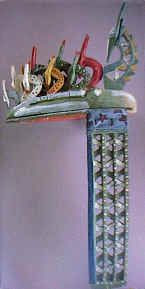Beginning in the 1790s, Merina rulers succeded in establishing hegemony over the major part of the island , including the coast, In 1817, the merina ruler and the British governor of Mauritius concluded a treaty abolishing the slave trade,which had been important in Madagascar;'s economy,. In return , the island received british military and financial assistance,. British influence remained strong for several decades , during which the Merina court was converted to Presbyterianism, Congregationalism, and anglicanism.
The british accepted the imposition of a french protectorate over Madagascar in 1885 in return for eventual control over Zanzibar and as part of an overall definition of speres of influence in the area. Absolute French control over Madagascar was established by military forcein 1895-96, and the merina monarchy was abolished.
Malagasy troops fought in France, Morocco, and Syria during World War I . After France fell to the Germans , the vichy government administered Madagascar. British troops occupied the strategic island in 1942 to preclude its seizure by the Japanese. The Free French received the island from the United Kingdom in 1943.
In 1947, the French Govt. suppressed a national uprising after bitter fighting for several years.After passing their overseas Reform Act in 1956 they decided to move peacefully toward independence of Madagascar. It was proclaimed to be an autonomous state within French Community, in Oct. 1958.They were given full independence in June, 1960, after a period of provisional govt.
The first president of Madagascar was Philibert Tsiranana, elected from his party, Social Democratic Party when they got power in 1960.


















































